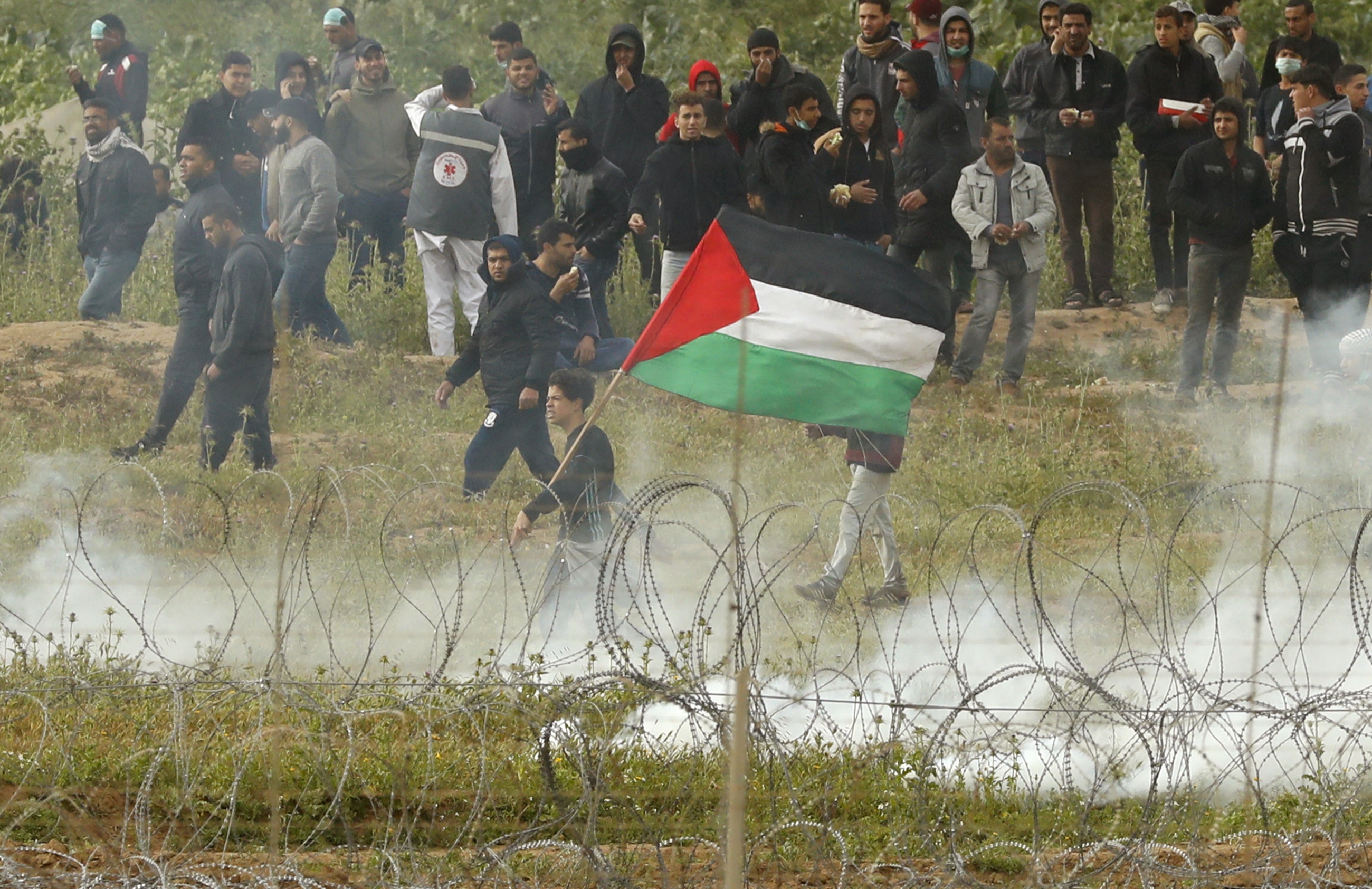Palestinian journalist shot in head by rubber bullet while covering Gaza protest

Israel forces shot and injured a Palestinian journalist with a rubber-coated steel bullet on Friday, and three others were killed, including a 19-year-old protester, as demonstrations continued in Gaza.
Safinaz Allouh was covering the ongoing Great March of Return campaign along the Gaza-Israel border fence when she was hit in the head and injured.
East of Khan Younis, a teenager identified as Raed Khalil Abu Tair was shot in the abdomen and later died from his wounds, according to the Gaza health ministry.
Two other Palestinians, both fighters, were shot and killed by Israeli drone strikes on a Hamas military facility in central Gaza Strip, a Gaza health ministry spokesman, Ashraf al-Qedra, said. Three more people were injured in the strike. It was not immediately clear if the injured were civilians or fighters.
Palestinians have been marching for more than a year in support of the right to return to homes they were driven from during the creation of the state of Israel in 1948.
The initiative began in March 2018 after a call from local civil society urged local Palestinians to engage in a mass march towards the Gaza fence in opposition to Israel's ongoing siege on Gaza.
The Gaza health ministry noted that since protests began at least 272 Palestinians have been killed in Gaza by Israeli forces.
Israel has notably come under fire for targeting health workers and journalists - including paramedic Razan al-Najjar, whose killing in June prompted international outrage.
In March, a UN inquiry concluded that Israeli soldiers had intentionally maimed Palestinians protesting in Gaza over the past year, creating a generation of disabled youth.
The UN report noted that more than 80 percent of the 6,106 protestors wounded in the first nine months of the Great March of Return were shot in the lower limbs.
Healthcare providers told Middle East Eye that the pattern of wounds shows that Israeli soldiers are purposefully shooting to maim protesters, most of whom are in their 20s and now require long-term medical care.
Middle East Eye propose une couverture et une analyse indépendantes et incomparables du Moyen-Orient, de l’Afrique du Nord et d’autres régions du monde. Pour en savoir plus sur la reprise de ce contenu et les frais qui s’appliquent, veuillez remplir ce formulaire [en anglais]. Pour en savoir plus sur MEE, cliquez ici [en anglais].




